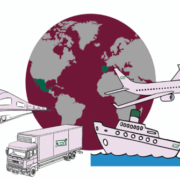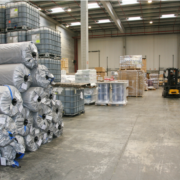#DidYouKnow – Distribution Networks in the Consolidation of Goods
In order correctly carry out groupage or consolidated shipments of our merchandise, a fully functioning and efficient capillary distribution network needs to exist. Once the consolidated cargo arrives at its destination, regardless of the type of transport used to get it there, be it air, land or sea, the products contained then need to be distributed.
The distribution networks can offer:
- Control of the shipments until they reach their final addressees
- Fixed transit times related to their final destinations
- Competitive rates
Moreover, depending on the location of the distribution networks, we can:
- Distribute with the network in each city, province or region
- Distribute with the network in each country, or
- Distribute through distribution hubs connected within different countries
The distribution network needs to be organized depending on the availability of departures and distribution tools.
Generally, when a consolidated shipment arrives in a city or a region, it needs to wait until enough merchandise is accumulated to be sent out. This results in deliveries going out once or twice a week, resulting in lost transit time. This could be improved through the capillary distribution network in countries where such networks exist.
If we have the ability to decide to or have access to a network at a national level, the volume of the cargo increases and makes additional weekly departures possible.
Alternatively, if the distribution level is extended to several countries, we could offer daily departures to the hub (always according to availability), and continue the delivery from there.
This is why it is vital to differentiate between multinational and medium-sized companies that carry out consolidated shipments. Generally medium-sized companies have their own capillary distribution networks, meaning that they have access to warehouses of origin and destinations, and therefore restrict themselves to specific countries for import and export.
In the event of multinational companies, it is standard practice to load all of the goods of a customer, regardless of their destination or origin, at the same time. This merchandise is then consolidated in a single warehouse and from there loaded onto the trucks of the different company lines. This allows for the customer to save considerable costs.
Groupage or consolidation operations need to be adapted to the typology of each country (in terms of uses and customs) or to the volume of cargo sent.

Ibercondor provides comprehensive logistics and forwarding services, for land, sea and air transport and customs representation
For example, a local distribution network in Italy, comprised of spread out small companies that are dedicated to distributing in specific areas, will not operate in the same way as other types distribution companies which operate on national or trans-national levels, as is frequently seen in northern Europe.
In terms of tariffs, by having suppliers adapt to the environment of the different countries, a tariff for each territory of origin or destination can be generated.
It is also very important to review the packaging, labelling and documentation of the goods sent out, both during the collection and the delivery segments of the transport.
If there are any anomalies present, these should be indicated on the collection or delivery notes, to avoid possible claims after the transport is completed. This saves costs with the insurance companies and premium increases when claims are indeed justified.
Nowadays, in this world of globalized commerce, clients can request tighter delivery times, regardless of how it is done. Having a distribution network tailored ot each destination allows Ibercondor to offer a winning service, thus meeting customers’ delivery expectations.
There is no better or worse model, they are all good if used correctly. The important thing is to study each market and use its strengths to establish synergies with our partners, because with mutual trust come great business opportunities.
Finally we have to understand that our services do not end with the arrival of the consolidated shipments at the ports or places where the main transport ends; it ends instead with the final delivery to the recipient, as specified in the terms offered.

David Farzón Responsable dpto. consultoría en Ibercondor, S.A.
Want to know more?Don’t miss the 2019 edition of the technical course on groupage and consolidated transport. Check it out now and register today: http://ow.ly/IIkg30nX1lP







